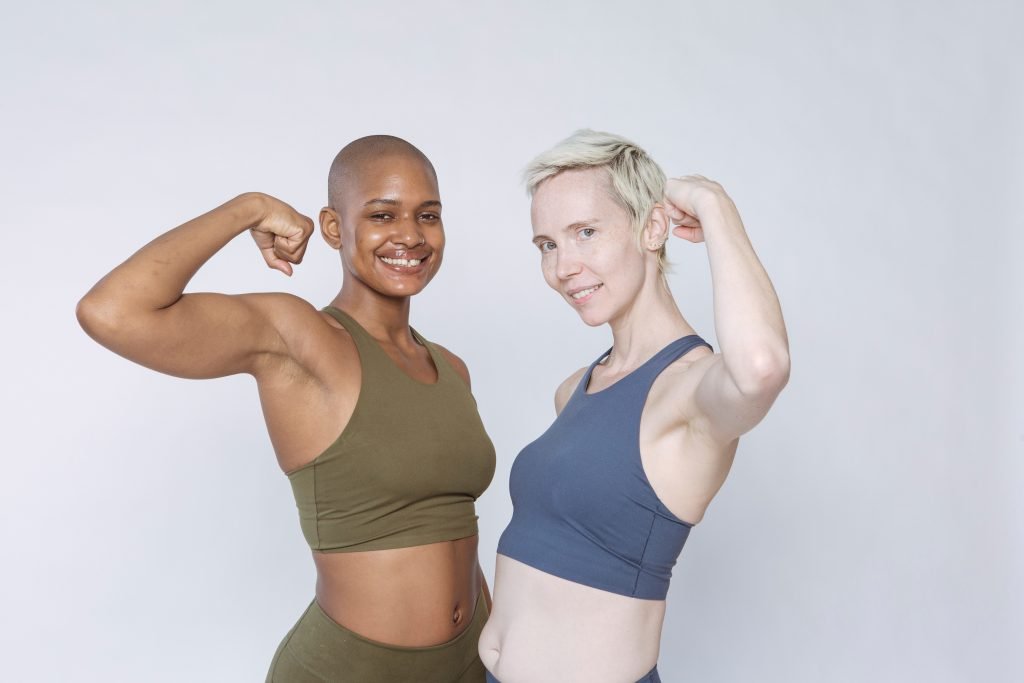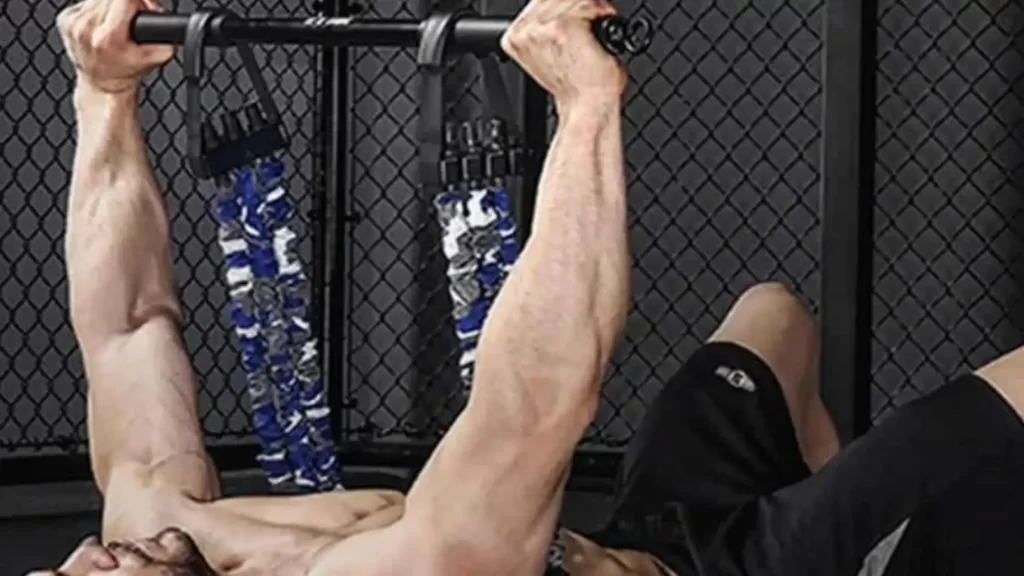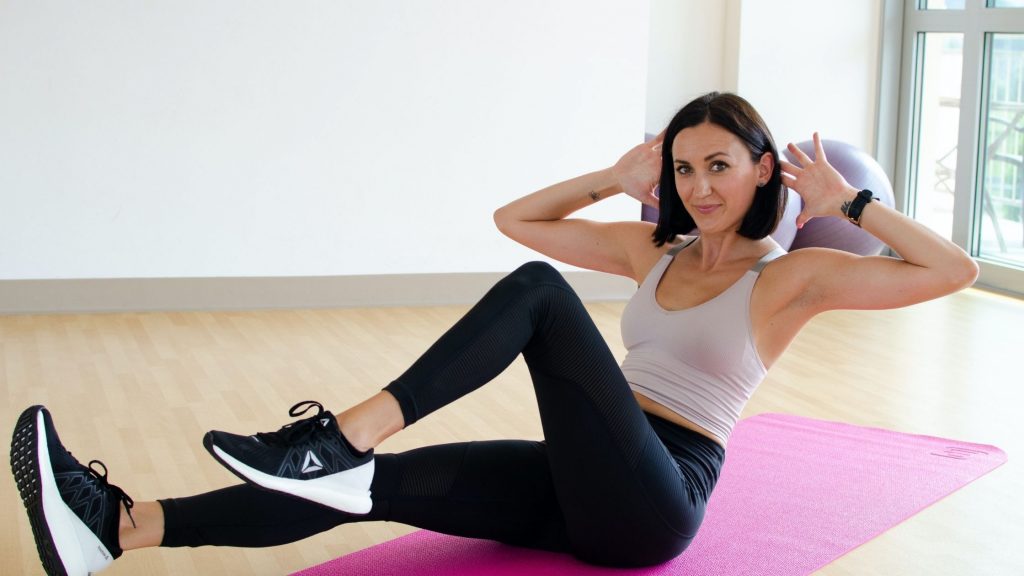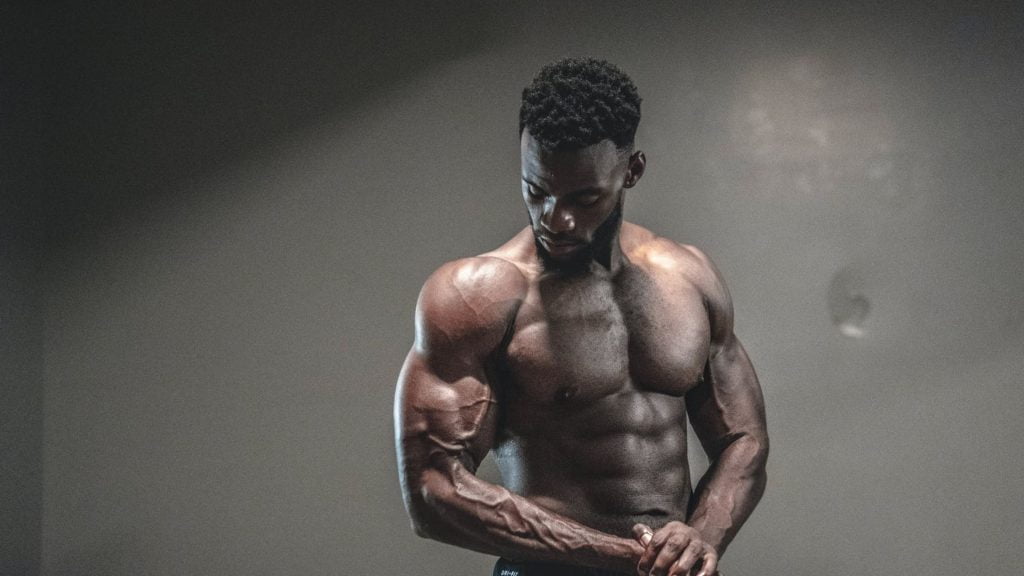Bicep Stretches are a terrific method to round up your upper-body workout. These bicep stretches will improve your flexibility and range of motion, allowing you to stretch deeper and further with less effort.
They also aid in relieving muscle tension and tightness, which is essential in avoiding injury and enhancing performance. During the stretches, keep your breathing smooth, steady, and relaxed. Avoid jerking, bouncing, or pushing movements, as well as locking your elbows or forcing positions. Always do the stitches after a warm-up session.

IN THIS ARTICLE
Bicep stretch benefits
Stretching your biceps is a terrific method to round up your upper-body workout. These bicep stretches can help you increase your range of motion and flexibility, allowing you to dig deeper and further with less effort. They also aid in relieving muscle tension and tightness, which is essential in avoiding injury and enhancing performance.
- Biceps muscles and blood flow should be activated. Bicep stretches that excite your muscles, alleviate muscle tension, and promote blood flow to the area are the best. When lifting weights (whether dumbbells, a barbell, or moving boxes) or starting a tough workout program like yoga, strength training, or a sports session, a bicep stretch can make it simpler to activate the proper muscles
- Increase your range of motion in the short term. Stretching your biceps increases your range of motion, allowing you to perform deeper stretches and completely activate muscles. If you have a lot of stiffness or tightness in your arms, or if you’re planning an arm workout and want to perform as much of the motion as possible, bicep stretches are a great way to release tension and encourage a short-term range of motion.
- Long-term flexibility should be increased. Consistent, safe bicep stretches over time can improve your long-term flexibility, allowing you to perform deeper stretches and hold stretches for longer periods of time.
- Muscle soreness is relieved. While many athletes bicep stretches before and after a workout to ease muscular stiffness, other personal trainers believe that bicep stretching has little effect on aching muscles or pain reduction. Stretching your biceps, however, may provide relief through a placebo effect, according to studies, because it engages your muscles and makes you feel your pain will go away.
ALSO READ: Can You Workout Twice A Day? 10 Health Tips, Benefits & Risks
6 Simple Bicep Stretches
1. Standing bicep stretch:
Your biceps, chest, and shoulders will be stretched.
How to do:
- At the base of your spine, interlace your hands.
- Straighten your arms and face down with your hands facing down.
- Raise your arms to the highest point they can go.
- This position can be held for up to a minute.
Rep: 1–3 times.
2. Seated bicep stretch:
For these bicep stretches, keep your head, neck, and spine in a straight line. Make sure you’re not slouching or arching your back. You’ll feel a stretch in your shoulders and chest in addition to your biceps.
How to do:
Rep: 2–4 times.
- Sit on the floor in front of your hips with your knees bent and your feet flat on the floor.
- Place your hands behind you, fingers pointing away from your body, on the floor.
- Ensure that your weight is spread evenly across your feet, buttocks, and arms.
- Without moving your hands, slowly push your buttocks forward toward your feet.
- Hold this position for up to 30 seconds.
- Return to your starting posture and rest for a few minutes.
3. Doorway bicep stretch:
The doorway bicep stretches will extend your biceps while opening up your chest.
How to do:
- With your left hand at waist level, stand in a doorway, gripping the doorway with your left hand.
- With your left foot, take a step forward, bend your knee, and shift your weight forward.
- Maintain a small bend in your elbow while feeling the stretch in your arm and shoulder.
- Hold for up to 30 seconds in this position.
Rep: 3-5 sets on both sides.

4. Wall bicep stretch:
These are basic bicep stretches that will improve the sensation of your chest, shoulders, and arms. Experiment with changing the position of your hand to notice how it impacts the stretch.
How to do:
- Place your left palm against a solid item or a wall.
- Slowly turn your body away from the wall.
- You’ll feel the stretch in your chest, shoulder, and arm.
- Hold this position for up to 30 seconds.
Rep: 3-5 times on both sides.
5. Horizontal arm extensions
Horizontal arm extensions join stretching and active movement. You can execute these bicep stretches while sitting or standing.
How to do:
- Extend your arms out to the side, parallel to the ground.
- Your palms should be facing backward, so turn your thumbs down.
- Maintain this posture for 30 seconds.
- Pulse your hands in a clockwise direction for 30 seconds.
Rep: Do 2-3 sets, gradually increasing the amount of time you hold each position.
6. Horizontal hand rotations
Although these hand rotations may not appear to be much, they aid in strengthening your arm while also stretching your biceps.
How to do:
- Turn your thumbs down to rotate your shoulders forward.
- Return to your original starting position.
- Turn your thumbs up to rotate your shoulders backward.
- Return to your original starting position.
Rep: Do 2 to 3 sets of 1 minute each.
7. Overhead holding bicep bar stretch
These bicep stretches engage several muscle groups at the same time. The heat will be felt in your core, upper back, shoulders, and biceps.
How to do:
- To reach a secure bar, use a step, chair, or bench.
- Take a firm grasp on the bar with both palms facing away from you.
- Hands should be shoulder-width apart, and arms should be straight.
- Hold your breath for a minute.
- Return your feet to the step with care.
Rep: up to 3 times.
8. Horizontal Arm Extension
If you’re looking for a biceps stretch that’s easy to do and can be done without any equipment, add this stretch to your routine. This is a simple yet highly effective stretch to do before or after a workout.
How to do:
- Stand with your feet shoulder-width apart and your arms extended on either side of your body to open your chest.
- Without bending your elbows, bring your arms in. Your palms should be facing each other yet not touching each other.
- Open your arms back and slightly squeeze your shoulder blades to stretch the chest and arms.
Rep: Repeat the process for 30 seconds 4-5 times.

Mistakes To Avoid When Stretching
- Bouncing. If you’re doing a long stretch, do not bounce or move your body to relieve the stress. This makes it harder for your muscles to relax, leading to a tear in a muscle or tendon.
- Getting right into it. It’s best not to enter a stretch cold, as this can result in a rip or tear. Always begin with a warmup. This might be a 10-minute gentle cardio session, but it could take longer for certain people.
- Position is incorrect. You might miss the muscle you’re willing to stretch due to poor position. Feeling the muscle with your free hand is a wonderful technique to evaluate if your form is on point. During the stretch, it should feel tight and then loosen up.
- Pushing yourself to the limit. You can’t just wake up one day and be a contortionist. A stretch should never be painful, even if it is slightly uncomfortable. Maintain a smooth and steady flow as you progress to greater ranges of motion.
- Stretching a muscle that has been wounded. Depending on the severity of the injury, stretching an injured muscle may not be the greatest choice. If you feel good that day, seek medical advice before extending an injured area since it might cause more harm than good.
ALSO READ: Effective Way To Hang Clean -Benefits & 3 Variants
Conclusion
In this article, you will find how to do the bicep stretches properly and effectively without injuring yourself. Some of the most effective bicep stretches are given in this article the number of repetitions required and thorough steps to follow. Keep in mind that you should not overextend yourself. Some of the most common faults people make while bicep stretching is also listed. Always start with a warm-up session to avoid sprains and strains while doing your workout.
FAQ
How do I get rid of bicep pain?
Cold packs should be applied to the biceps muscle for 20 minutes at a time, several times per day. As a result, oedema will be reduced. Nonsteroidal anti-inflammatory medicines, such as ibuprofen or paracetamol, can be used to relieve the discomfort and swelling caused by biceps tendonitis.
Should I stretch a strained bicep?
“Stretching aids in breaking the cycle,” which begins with soreness and progresses to muscle spasm, contraction, and tightness. Take it easy for a few days as your body adjusts to doing some light exercise like walking or swimming. Maintaining muscle mobility might also help relieve pain.
How do you know if you strained your bicep?
There is a weakness in the shoulder. On the upper arm, there might be bruising. Your arm is immobile and unable to rotate. The biceps in the upper arm has changed in appearance (it may look popped out).














